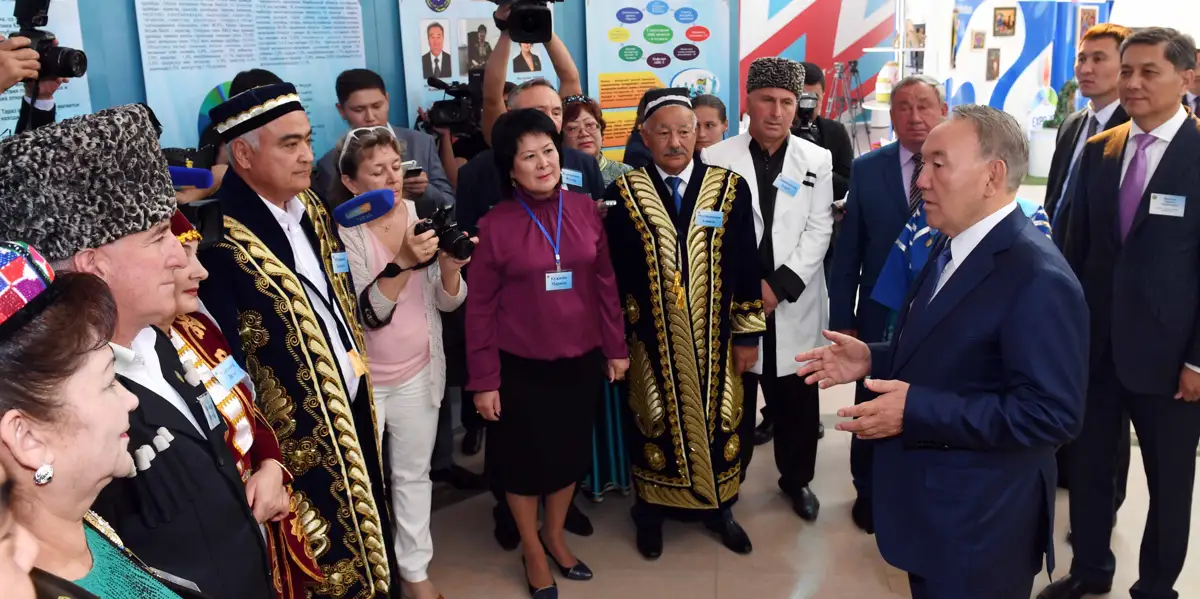Kazakh President inspects new building of House of Friendship in Taraz

In the House of Friendship, the Head of State met with representatives of ethnocultural associations of Zhambyl region. During the conversation, he highlighted the importance of the ethnic diversity of Kazakhstan.
The new House of Friendship was established in September 2016. Local authorities allocated KZT 1.27 billion for construction purposes. The engineering solutions used in the construction of the three-floored building are unique as the roof consists of metal structures set on 8 foundations in the shape of a 56-meter tea bowl turned upside down. Seen from above, the building looks like an eight-pointed star called the "ornamental motif of Aisha Bibi" (the 10th-century mausoleum in Zhambyl region).
The House of Friendship unites the representatives of ethnic groups living in the region. On the third floor, there is a conference hall for 240 people, an auditorium for 100 people, research guidance rooms, and a dance room. The conference hall is surrounded by a showroom edged with colorful stained-glass artwork displaying the ethnocultural associations. Located on top of the dome, pyramid-shaped clouded glasses ensure illumination of the building in the daytime.
The Regional Assembly of People of Kazakhstan established a foothold there. It includes 175 public consent councils, 27 mothers' councils, 12 mediation offices, 12 councils of elders, the APK Department, the Scientific Expert Group, the Club of Applied Art Masters, and the Aq Zhelken Youth Association. The People's Assembly of Kazakhstan of Zhambyl region comprises 73 ethnocultural associations, of which 26 and 47 are located in Taraz and districts, respectively.
1.111 million people including 87 ethnic groups live in Zhambyl region: Kazakhs (72.2%), Russians (10.7%), Dungans (4.7%), Turks (2.9%), Uzbeks (2.4%), Azerbaijanis (1.3%), Koreans (1.1%), and other peoples (less than 1%).